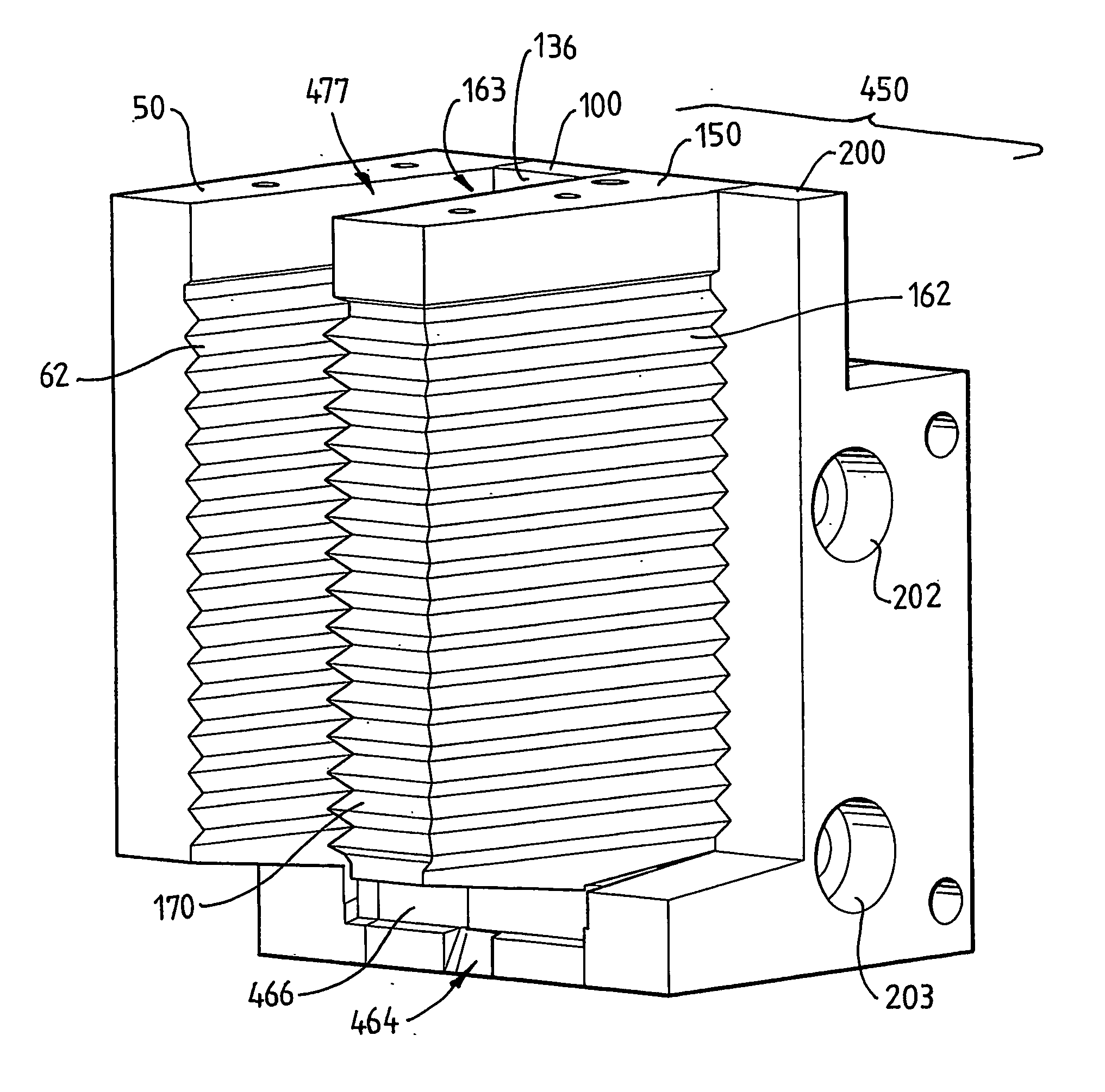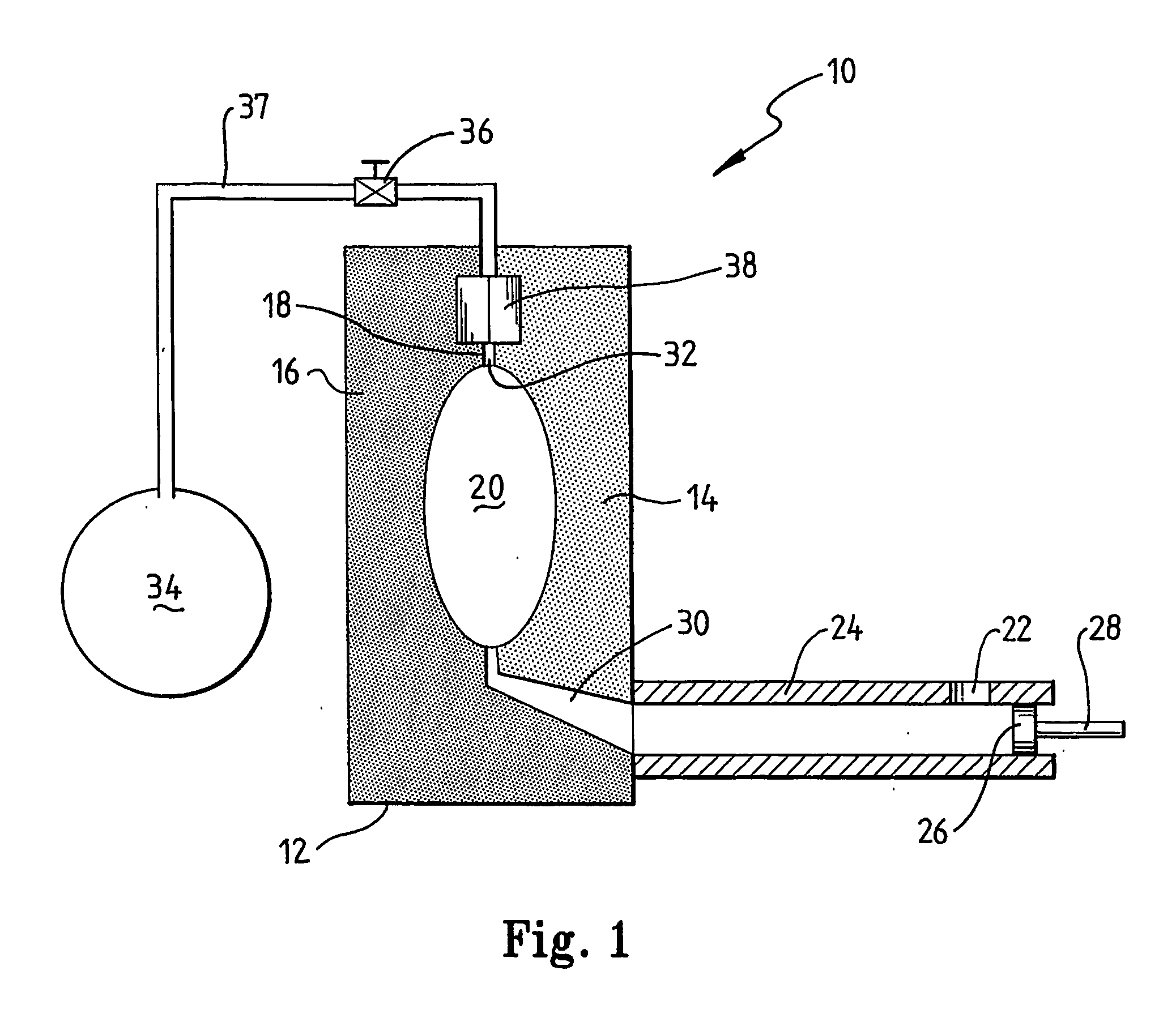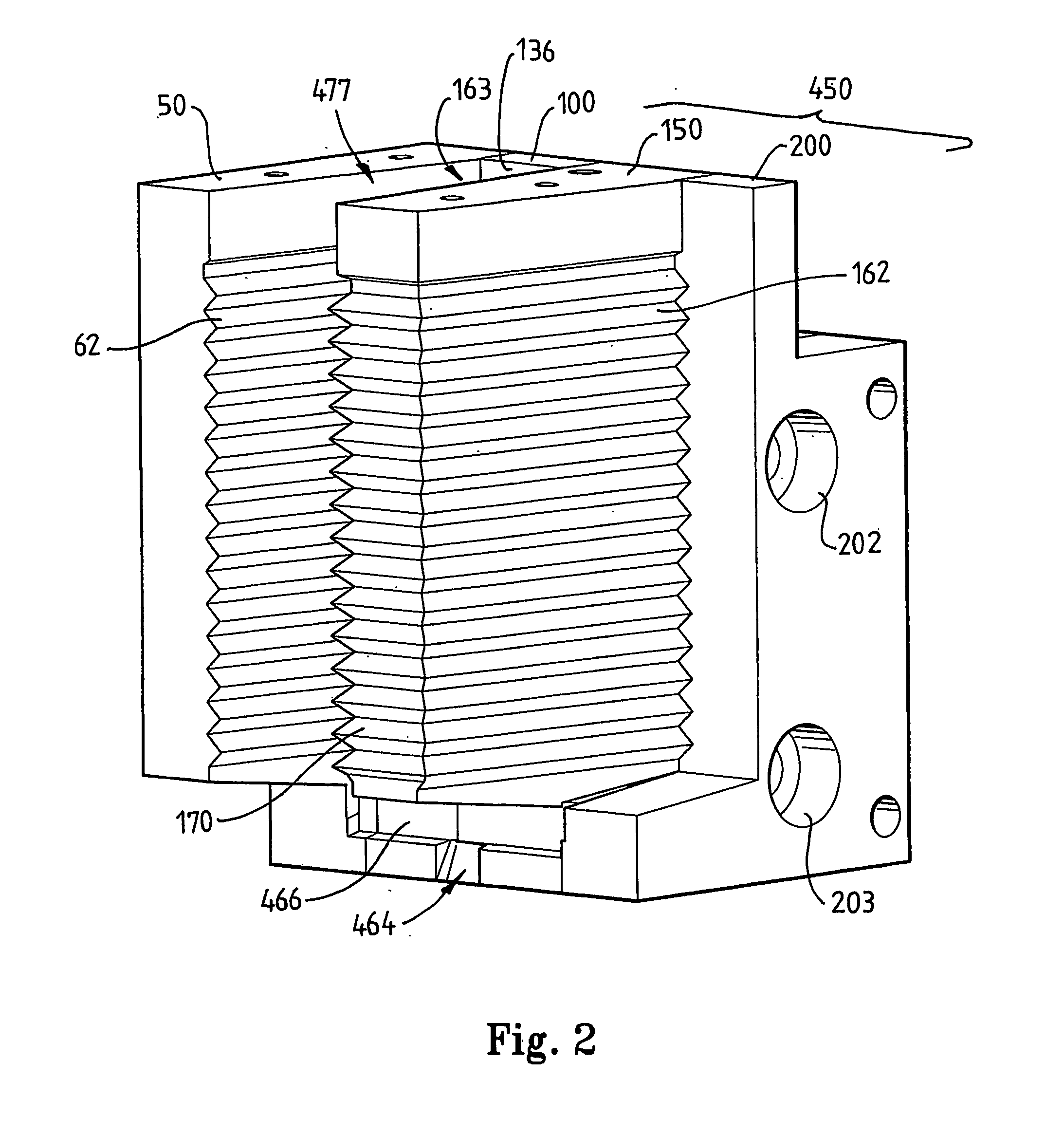Venting Assembly for a Casting Mould
a technology of die casting mould and venting assembly, which is applied in the direction of manufacturing tools,foundry moulding apparatus, other domestic objects, etc., can solve the problems of unsuitable heat treatment, high production cost, and high production cost, so as to increase the venting area, increase the projected area of the die, and increase the space of the di
- Summary
- Abstract
- Description
- Claims
- Application Information
AI Technical Summary
Benefits of technology
Problems solved by technology
Method used
Image
Examples
Embodiment Construction
[0066]Referring to FIG. 1, the HPDC apparatus 10 comprises a die 12 comprising a fixed half die 14 and a moving half die 16 which are brought into mutual engagement by fluid actuated rams (not shown). The half dies 14 and 16 separate along a parting face 18. The half dies in engagement form a casting cavity 20 therebetween which has the shape of the product wished to be cast.
[0067]Molten metal is introduced to the cavity 20 by means of a high pressure injection system wherein metal is fed through a pour hole 22 into a shot sleeve 24 and a piston 26 on a plunger 28 first closes the pour hole 22 and then, in the same stroke, forces the desired amount of molten metal from the shot sleeve 24 through a runner 30 into the cavity 20. At the opposite end of the cavity a vent hole 32 allows gases and excess metal to escape the cavity.
[0068]Before molten metal is introduced to the cavity 20, the air in the cavity is evacuated through the vent hole 32 by means of a vacuum supply in a tank 34 c...
PUM
| Property | Measurement | Unit |
|---|---|---|
| depth | aaaaa | aaaaa |
| depth | aaaaa | aaaaa |
| taper angle | aaaaa | aaaaa |
Abstract
Description
Claims
Application Information
 Login to View More
Login to View More - R&D
- Intellectual Property
- Life Sciences
- Materials
- Tech Scout
- Unparalleled Data Quality
- Higher Quality Content
- 60% Fewer Hallucinations
Browse by: Latest US Patents, China's latest patents, Technical Efficacy Thesaurus, Application Domain, Technology Topic, Popular Technical Reports.
© 2025 PatSnap. All rights reserved.Legal|Privacy policy|Modern Slavery Act Transparency Statement|Sitemap|About US| Contact US: help@patsnap.com



